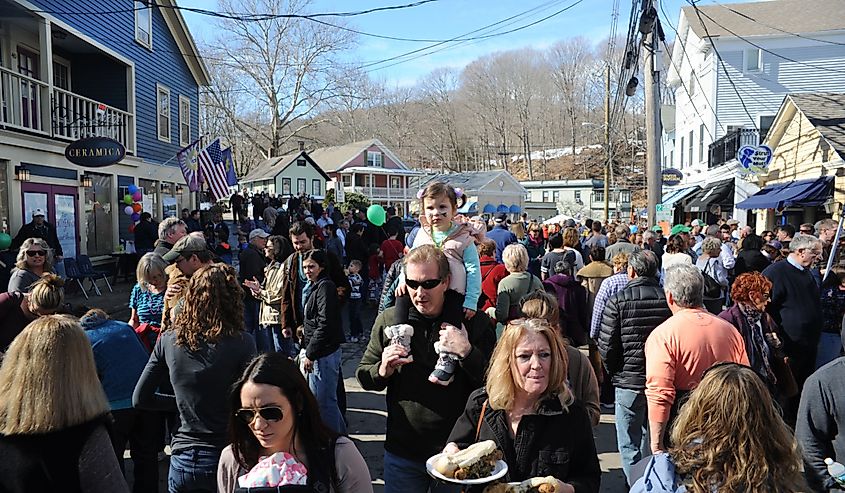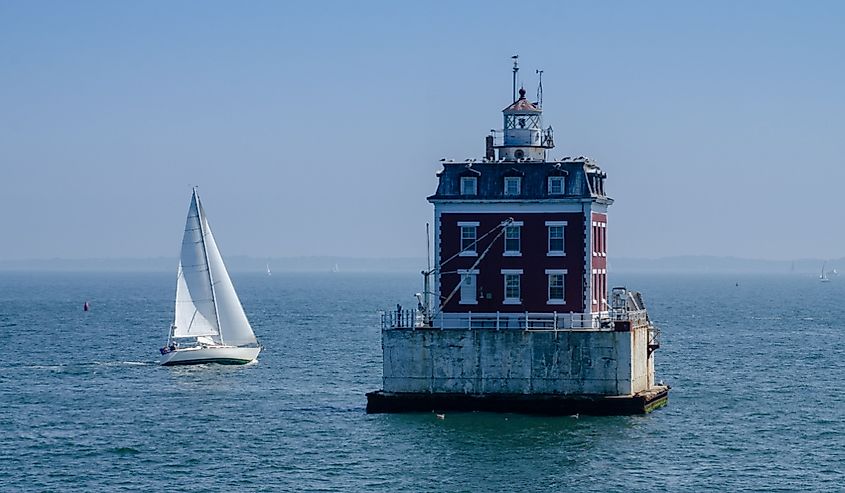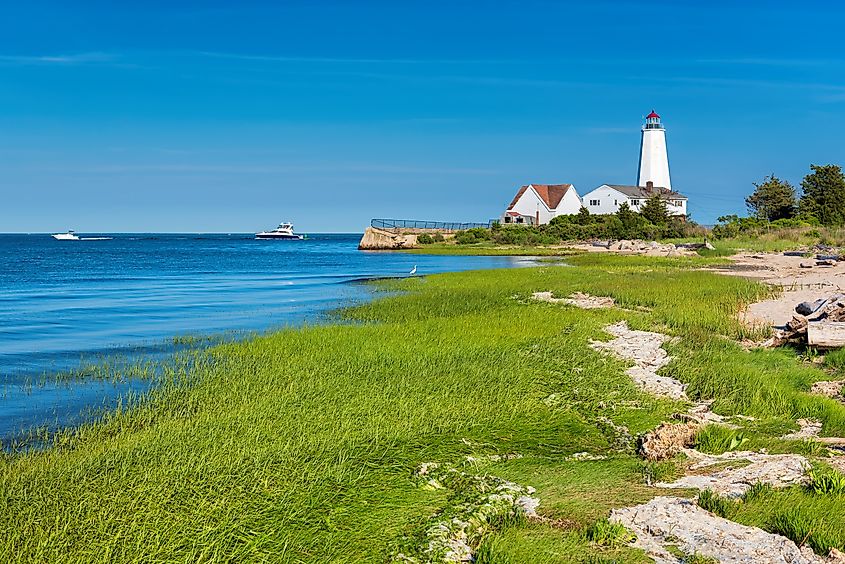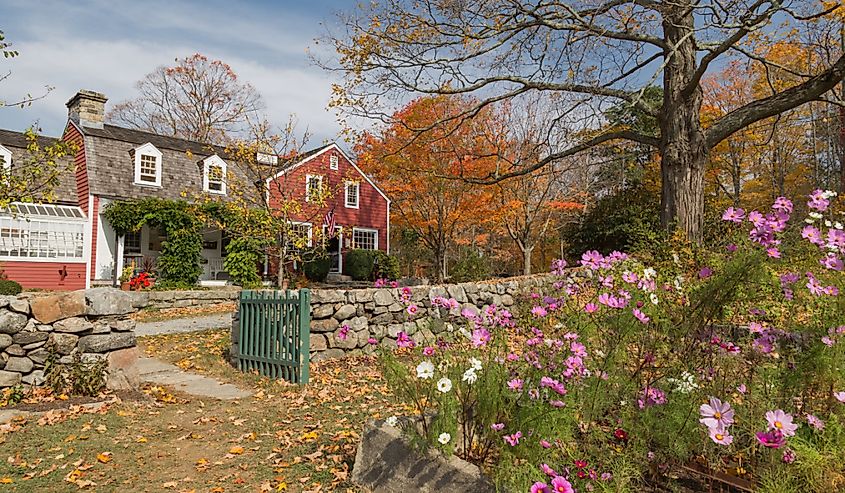
These Towns in Connecticut Have Rich Cultural Heritage
The New England state of Connecticut between major metropolitan areas Boston and New York City, with its proximity to heavily populated regions, provides a seaside break for city dwellers. From the Algonquian word meaning "land on the long tidal river," Connecticut was the 5th state to enter the union on January 9, 1788. Boasting historic seaports and scenic towns with colonial history, Connecticut has ties to the beginnings of the United States. It is steeped in rich cultural heritage, appealing to all visitors, especially those interested in history.
Chester

Located 30 miles south of the capital, Hartford in the Lower Connecticut River Valley, Chester, Connecticut, began as a shipbuilding and mill town. First settled in 1692, the town is dotted with historic buildings, including the Chester Meeting House, dating from the late 1700s. The Chester Historical Society restored the building, and visitors can learn more about the buildings and general history of the area at the Chester Museum at The Mill. Another part of Chester's rich heritage is the Chester Fife & Drum Corps, Connecticut's oldest fife and drum corps, established in 1868. It is also one of the oldest in the United States.
The Norma Terris Theatre, a part of the nearby Goodspeed Opera House, presents classical musical productions such as "South Pacific" but aims to discover and foster new musicals. Celebrating the culture of the Andes in Connecticut, Chakana Sky Alpacas allows guests to get up close and personal with the alpacas, feeding and taking pictures with the animals.
Farmington

Farmington, Connecticut, in Hartford County, incorporated in 1645, maintains its cultural heritage as seen in its historic buildings, such as the Hill-Stead Museum. Built-in 1901 and the first project of architect Theodate Pope Riddle, the fourth registered female architect in the country, the museum features work by impressionists Mary Cassatt, Edgar Degas, Claude Monet, and more. The Stanley-Whitman House is another historic property in Farmington, and the circa 1720 house and gardens exhibit colonial life in the region.
In addition to colonial history, Farmington also has significant historical sites from the 1800s. The Amistad Trial of 1841 took place in the town, and visitors can view several locations connected to the abolitionist movement. Another site is Miss Porter's School, a local landmark founded in 1843. What began as an all-female, private school still exists today as an independent girls' school.
Groton

Incorporated in 1705 and situated on the Thames River in the southeastern portion of Connecticut, Groton has a rich history connected to the Revolutionary War and beyond. Fort Griswold Battlefield State Park features the Groton Monument, built between 1826 and 1830, which stands to commemorate the American soldiers who died at the Battle of Groton Heights when British troops led by General Benedict Arnold attacked Fort Griswold on September 6, 1781. There is also a museum on site. Also on the grounds of Fort Griswold is the Ebenezer Avery House. After the Battle of Groton Heights, American soldiers sought refuge in the house, which originally sat at the corner of Latham Street and Thames Street.
Groton has long been associated with US naval history, and it is home to the Submarine Force Library & Museum, which features a collection of submarine artifacts. The museum's history of the US Submarine Force dates back to David Bushnell's Turtle, a submersible used in the Revolutionary War.
Litchfield

Litchfield, Connecticut, is about 30 miles west of Hartford in the northwestern region of Connecticut. Downtown, along the town green, picturesque storefronts line West Street. The town's historic buildings include the Benjamin Tallmadge House, built in 1775. Benjamin Tallmadge, who aided George Washington and oversaw his spy ring, purchased the house in 1782. Another historically significant site is the Solomon Rowe House, the only documented 19th-century residence owned by an African American in the county. The Litchfield Historical Society's artifacts and archives are housed in the Litchfield History Museum, which includes the Helga J. Ingraham Memorial Library. Visitors can also tour the site of the nation's first law school, the Tapping Reeve House and Litchfield Law School, dating from 1774.
For nature lovers, the Ripley Waterfowl Conservancy gives guests a look at an extensive collection of waterfowl, one of the largest in North America. Open seasonally, over 70 species are part of the organization's waterfowl and wetlands conservation effort.
Mystic

Only about 8 miles from Groton and at the mouth of the Mystic River is Mystic, Connecticut. Settled in 1654, it gained a reputation for shipbuilding and whaling. Historic downtown buildings housing seafood joints, bakeries, and well-known eatery Mystic Pizza transport visitors into the past. The Mystic Seaport and Marine Museum includes a re-creation of a New England village, a working shipyard, exhibit halls, and more. A spooky way to learn more about the town's history is to take a lantern-lit ghost tour through the downtown graveyard or even participate in a "Paranormal Pub Crawl" with Seaside Shadows Haunted History Tours.
Minutes from downtown is the Denison Homestead, a privately owned property of 160 acres. A family farm for 300 years, it features the 1717 House Museum, listed on the National Register of Historic Places. Also on the property is the Denison Pequotsepos Nature Center, educating guests on southeastern Connecticut habitats in their onsite education facility, wildlife sanctuary, and natural history museum. The property also includes a farmers' market.
Old Saybrook

Old Saybrook, Connecticut, is filled with cultural heritage, beginning as an independent colony in 1635. The seaside town on Connecticut's scenic shoreline boasts stately historic buildings and colorful downtown storefronts. The Old Saybrook Walking Tour takes visitors to historic churches, cemeteries, and other buildings, such as the Railroad Station and Katharine Hepburn Cultural Arts Center. The General William Hart House and Public Heritage Gardens offer guests a chance to view the 1767 property, exhibits, and vibrant gardens.
Local beaches Old Saybrook Town Beach and Harvey's Beach give beachgoers a summer landscape to enjoy swimming, sunning, boating, and more. Founders Memorial Park, with its scenic overlook, provides spectacular views of the Connecticut River and Long Island Sound and is a place for picnicking and kayaking.
Ridgefield

Sitting near Connecticut's border with New York State, Ridgefield, Connecticut, is in Fairfield County in the foothills of the Berkshire Mountains. In addition to the walkable downtown with unique shops and eateries, the historic sites around town offer visitors a look into its history. The area is rich with culture, including arts offerings. The Weir Farm National Historical Park celebrates the life and work of American Impressionist Julian Alden Weir. The 68-acre park offers guided tours and free outdoor programs, including workshops on impressionist painting, informal art instruction, and more. Guests of the Keeler Tavern Museum can travel back to the early 1700s and stroll through the 4-acre site, which includes the historic tavern museum, walled garden, carriage barn, cottage, and more.
Ridgefield is also home to Settler's Rock, where original settlers spent the night, as indicated by a historical marker. For outdoors enthusiasts, the Woodcock Nature Center is 152 acres of preserve and trails for hikers and birders, and the center also provides educational programming for the community.
Wethersfield

Just south of Hartford along the Connecticut River, Wethersfield, Connecticut, offers a chance to tour the largest Historic District in Connecticut, in which visitors will find 50 houses dating to before the Revolutionary War. Guests of the town can also take the Wethersfield Heritage Walk, a 3-mile, self-guided tour that highlights historical sites throughout Old Wethersfield. Also in the historic district is the Webb Deane Stevens Museum, and one of the houses on site, the Joseph Webb House, served as the headquarters where George Washington planned military campaigns at the end of the American Revolution. The 8 acres of museum grounds include three furnished historic houses, the Holcombe Education Center, and period outbuildings.
At the Eleanor Buck Wolf Nature Center, guests experience live animals and hands-on exhibits. The center aims to help visitors explore and learn more about the natural world through ecology education. Wethersfield also features many gardens and farm stands, including the Wethersfield Community Garden and the Fred W. Weston Rose Garden, which features over 200 species of rose bushes.
Enchanting year-round, the welcoming small towns of Connecticut provide guests with enjoyable leisurely activities and historical enrichment. Whether touring a colonial-era museum or learning more about regional wildlife, there is something for everyone. The state possesses a cultural heritage reflected in the perseveration of historic sites, and the landscape's natural beauty offers a scenic backdrop for an experience that leaves visitors wanting to return to the Constitution State.











